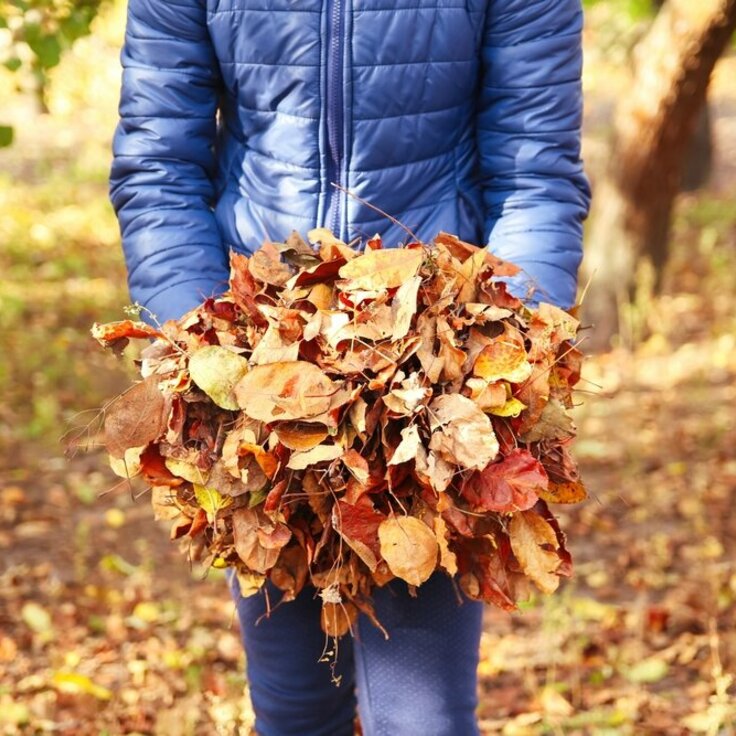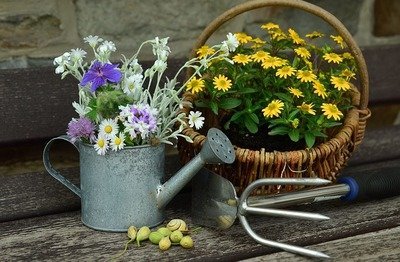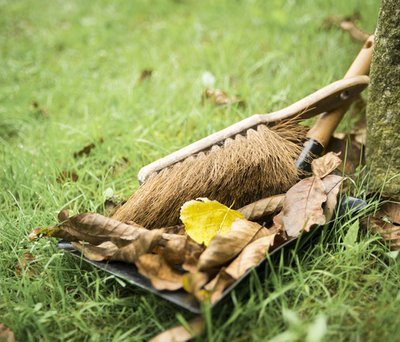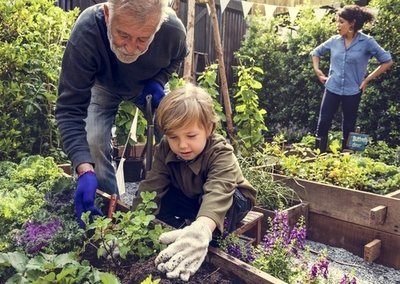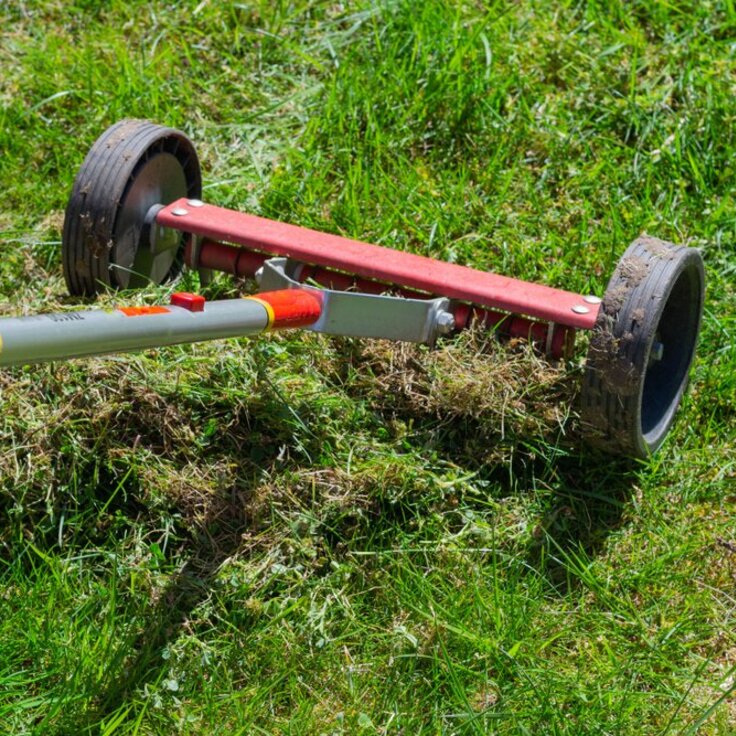Greenhouse Gardening 101: Essential Tips For Beginners
Struggling to extend your growing season and protect plants from adverse weather? A greenhouse can be a game-changer for gardeners, even those new to the concept. In this guide, we'll cover essential tips for setting up and maintaining a greenhouse garden effectively.
What is a Greenhouse?
A greenhouse is a special structure that helps plants grow by keeping the environment inside controlled. It has walls and a roof made of clear materials like glass or plastic, which let in natural light.
This setup keeps the space warm even when it's cold outside.
Gardeners use greenhouses to extend the growing season and protect plants from bad weather. By controlling temperature, humidity, and air circulation, a greenhouse creates an ideal habitat for plant growth year-round.
Benefits of Using a Greenhouse
A greenhouse helps plants grow all year. It also keeps them safe from bad weather.
Extends the growing season
Growing plants in a greenhouse stretches the growing season. You can sow hardy plants like broad beans as early as late winter. Tender, fast-growing ones such as tomato plants thrive when planted mid-spring.
Grow lights and heated propagators help too. Use these tools to start summer crops like cucumbers indoors by late spring.
A greenhouse protects against cold snaps and gusts of wind, creating a stable environment for plant growth all year round. Control temperature with proper ventilation and heating systems to avoid fluctuations that could harm tender plants like eggplant or basil.
This way, you get fresh herbs and vegetables beyond their normal outdoor growing seasons.
Protects plants from adverse weather
Greenhouses create a safe space for plants. Heavy rain, strong winds, and hail can harm crops outdoors. In a greenhouse, your plants get protection from these elements. Use heaters and frost guards to keep seedlings warm during cold snaps.
Crops also stay safe from pests, animals, and birds inside greenhouses. This control boosts plant growth without interference from outside threats. Planting in controlled soil enhances their health further by providing the right nutrients consistently—no more worrying about adverse weather conditions harming your garden!
Enhances plant growth with controlled environment
A greenhouse offers a perfect environment for plant growth. By controlling temperature, light, and humidity, plants thrive without weather risks. Even in winter, heating systems keep temperatures steady.
Proper ventilation ensures fresh air flow. This prevents mould and keeps pests under control. Use tools like grow lights and soaker hoses to manage your plants’ needs efficiently all year round.
Planning Your Greenhouse Gardening
4. Planning Your Greenhouse Gardening: Choose the best location, then decide on the right size for your garden... You need ample sunlight and enough space for everything.
Choosing the right location
Choose a spot that gets plenty of sunlight. At least six hours of direct sun each day is ideal. Avoid placing your greenhouse near trees, as they can block light and drop leaves or branches onto the structure.
Good ventilation matters too. Ensure the area has enough space around it to allow air circulation. This helps keep plants healthy by reducing humidity and preventing diseases.
Determining the correct size
Measure the floor space you have available. Think about how many beds and grow bags you'll need. A larger greenhouse gives more room for seedlings, but it will also require more heating and ventilation.
Use a surface area calculator to make sure everything fits well. Consider if you want extra space for tools or accessories like seed packets and rain barrels. Ensure there's enough height for taller plants too!
Essential Steps to Set Up a Greenhouse
First, decide whether to build or buy a greenhouse—then prepare the soil and install ventilation systems.
Building or buying a greenhouse
Building or buying a greenhouse can be very exciting. You can grow plants all year long. Here are crucial steps to guide you:
-
Assess Your Needs: Think about what types of plants you want to grow, like tomatoes (Solanum lycopersicum) or strawberries (Fragaria x ananassa). Check your climate and growing seasons.
-
Consider Size: Choose a size that fits your space and needs. Small greenhouses are great for beginners, while larger ones suit more experienced gardeners.
-
Select Material Durability: Glasshouses look nice and last long but can be costly. Polytunnels are cheaper but might not be as durable.
-
Prepare Soil: Test the soil for nutrients using a soil test kit. Good soil is key to healthy plant growth.
-
Install Ventilation Systems: Proper airflow prevents humidity build-up and diseases in plants like parsley (Petroselinum crispum).
-
Set Up Heating Systems: Heaters keep the greenhouse warm during cold months.
-
Buy Greenhouse Accessories: Items like grow lights, drip irrigation systems, and vents help manage the environment inside your greenhouse.
-
Plan Location Carefully: Place it where it gets plenty of sunlight but also has some wind protection.
-
Build Or Buy Decision: Building allows customisation; buying is quicker but might limit options.
-
Ensure Water Supply: A stable water source simplifies watering duties; consider installing gutters for rainwater collection.
Make sure to account for every detail before starting your new greenhouse adventure!
Preparing the soil for planting
Preparing the soil for planting is a key step in greenhouse gardening. Healthy soil helps plants grow well.
-
Clear Debris: Remove any stones, weeds, and old roots. This ensures the new plants will have space to grow.
-
Test Soil pH: Use a soil test kit to check if your soil is acidic or alkaline. Most plants prefer a pH between 6.0 and 7.0.
-
Add Organic Matter: Mix in compost or other organic fertilisers to enrich the soil nutrient content. This will help plants get the nutrients they need.
-
Replace Soil Regularly: Change the soil every three to five years to avoid soil-borne diseases and pests control issues.
-
Ensure Proper Drainage: Add materials like sand or coconut coir to improve drainage if your soil is too clay-heavy.
-
Sterilise Soil if Needed: Use heat or chemicals to sterilise the soil if you suspect diseases. This kills harmful pathogens before planting.
-
Use Containers with Sterile Potting Mix: For delicate plants, use pots filled with sterile potting mix instead of garden soil to avoid contamination.
-
Level the Soil Surface: Make sure the surface is even for uniform seed germination and plant growth.
-
Moisten the Soil: Water the area lightly before planting seeds or seedlings to provide a suitable growing environment.
-
Install Raised Beds If Necessary: Raised beds with good-quality soils can be effective for managing water levels and temperature control in your greenhouse.
How to Buy a Greenhouse
Decide what plants you want to grow and the climate in your area. Pick a size that fits your needs, and choose strong materials like glass or plastic. Visit a well-known brand like Halls Greenhouses or a quality brand like Juliana.com.
Assess your needs based on plant types and climate
Some plants need more sunlight and warmth, while others thrive in cooler conditions. Check the climate in your area and pick plants that match those conditions. Warm-season crops like tomatoes or cucumbers need a heated greenhouse if you live in a colder region.
For cool-weather plants such as lettuce or spinach, an unheated greenhouse may be enough.
Research each plant's temperature and moisture needs before choosing what to grow. Some herbs like spearmint and basil prefer lots of light, whereas shade-loving vegetables might not require direct sun all day.
Understand the local weather patterns to decide on ventilation needs for your green house to keep temperatures steady.
Consider size and material durability
Choose a greenhouse that fits your garden size. Small backyards may need a compact cold frame or hoop house. Larger gardens can handle bigger structures like full-size greenhouses or hot houses.
The material matters too—plastic is cheaper and lightweight but wears out faster in harsh weather. Glass offers durability and better light transmission but costs more and needs stronger supports.
A steel frame resists rust and provides strength, making it ideal for windy areas. Aluminium frames are lighter but still sturdy enough for most climates. Polycarbonate panels balance cost with durability, giving good insulation to protect plants from temperature swings.
Always check that the materials suit both your budget and local climate conditions to ensure longevity.
Researching options starting with general resources
Look at gardening books first. These often cover greenhouse size, building tips, and plant care. Local libraries usually have a good selection.
Magazines can also help. They offer advice on using organic fertilisers and managing root systems. Many have articles on greenhouse types and how to pick the best one for your needs.
Ask other gardeners about their experiences too. Greenhouse owners might share insights into installing grow lights or choosing insulation material. Join online forums for more ideas on efficient space use or pest control methods in greenhouses.
Greenhouse Gardening Techniques
Start your seeds indoors to give them a head start. Manage temperature and humidity levels for healthy plants. Use space wisely by stacking pots or using hanging baskets.
Starting seeds indoors
Use clean trays and pots. Choose peat-free seeds and multipurpose compost. Prepare some seeds by soaking or stratifying them. Plant the seeds in shallow trays filled with moist soil.
Place the trays near a window or use grow lights for enough light. Keep soil damp, but not too wet, to avoid damping off plants. Cover with plastic wrap until they germinate, then remove it.
Thin seedlings when they are big enough to handle so each one has space to grow strong roots.
Managing temperature and humidity
Proper temperature and humidity control are vital in a greenhouse. Use a minimum/maximum thermometer to track changes, especially during winter. Keep the temperature between 18°C and 24°C for most plants.
Ventilation is key; open vents or use fans to prevent overheating.
Humidity should stay around 50% to 70%. Too much moisture can cause damping down, which leads to mould and mildew. In dry weather, mist plants or use an evaporative cooling system.
Regularly check both levels to ensure optimal plant growth.
Utilising space efficiently
Use vertical space with shelves, hanging pots, and trellises. Stack containers where possible. Grow bags can fit in tight spots. Use aisles only when needed to save room.
Maximise planting area by utilising borders or raised beds. Rotate crops like heirloom vegetables for better soil use. Install grow lights above plants for more layers of growing space without crowding your greenhouse.
Adjusting for seasonal changes
Plants in a greenhouse face different needs each season. Proper adjustment ensures healthy growth.
-
Spring Preparation:
-
Clean greenhouse thoroughly.
-
Check and fix any damage or leaks.
-
Start seeds indoors to get a head start on planting.
-
Summer Maintenance:
-
Install an irrigation system to ensure consistent watering.
-
Ventilate the greenhouse on hot days.
-
Provide shading to protect plants from intense sunlight.
-
Autumn Adjustments:
-
Harvest summer crops mid-season.
-
Replace spent crops with later-sown plants like tubers.
-
Improve insulation as temperatures drop.
-
Winter Care:
-
Increase heating to maintain optimal temperatures.
-
Use grow lights to compensate for shorter daylight hours.
-
Monitor humidity levels to prevent fungal diseases.
-
General Tips:
Use organic fertilisers for healthier plants all year round.
Control pests by using natural methods like peppermint oil or fish emulsion.
Ensuring these adjustments will help your plants thrive in every season, providing fruitful harvests and vibrant growth.
Common Challenges and Solutions in Greenhouse Gardening
Dealing with pests, diseases, and temperature changes can be tough...but there are ways to handle these issues effectively.
Controlling pests and diseases
Keep pests and diseases at bay. Regularly inspect plants for signs of trouble. Look for yellow leaves, holes in foliage, or slow growth. Act fast—remove any infected parts. Stop pests from spreading with organic sprays or natural predators like ladybirds.
Ensure good ventilation to prevent fungal growth. Keep the greenhouse clean by clearing dead leaves and debris daily. Rotate crops yearly to avoid building up disease in the soil. Use barrier methods such as mesh screens to keep pests out while letting pollinators in...
Remember: healthy plants resist disease better!
Dealing with temperature fluctuations
Greenhouses need electric or gas heaters in winter. They prevent frost and keep plants warm. During summer, evaporative cooling systems are useful. These systems reduce heat and maintain humidity.
Using a heated propagator unit helps seedlings grow. Providing extra heating ensures young plants develop well. This also protects them from sudden cold spells.
Advantages of Starting with Easy-to-Grow Plants
Starting with easy-to-grow plants builds your confidence and ensures success... perfect for beginners.
Recommended starter plants for beginners
Beginners can quickly start greenhouse gardening with easy-to-grow plants. These plants require little effort and produce great results.
-
Tomatoes - Grow fresh tomatoes for salads or sauces. They thrive in the controlled environment of a greenhouse.
-
Cucumbers - Enjoy crisp cucumbers for pickling or salads. They grow well with lots of sunlight and water.
-
Peppers - Bell peppers and chillies are perfect for beginners. They add colour and flavour to meals.
-
Strawberries - Fresh strawberries are sweet and delicious. They grow well in containers or hanging baskets inside the greenhouse.
-
Basil - Perfect for making pesto, basil grows quickly under full spectrum grow lights.
-
Chillies - Add a spicy kick to dishes with home-grown chillies.
-
Carrots - Carrots are cold-hardy, making them suitable for year-round growing inside the greenhouse.
-
Onions - Easy to plant and care for, onions can be used in many recipes.

